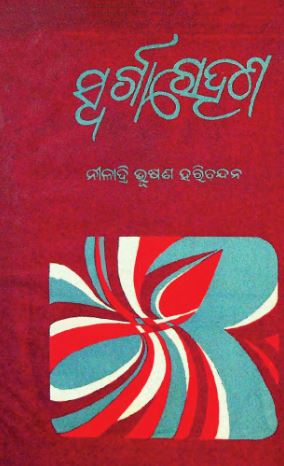Swargarohana, an Odia book penned by Niladri Bhushan Harichandan and published in 1987, stands as a remarkable contribution to modern Odia literature. The work, set in the realm of sub-drama with a strong puranic influence, delves deep into the mythological and spiritual tapestry of Indian tradition while exhibiting a unique dramatic form that appeals to both connoisseurs of ancient lore and contemporary readers alike.
Drawing inspiration from the rich mythological heritage of the Puranas, Swargarohana reimagines legendary narratives, transforming them into an engaging dramatic treatise. The title itself—translating to “Ascent to Heaven”—evokes a journey of transcendent significance where mortal aspirations and divine interventions converge. Harichandan, with exceptional literary finesse, marries these two elements into a dramatic narrative that bridges the gap between hallowed tradition and modern storytelling.
At the heart of the narrative lies the struggle for spiritual elevation, expressed through multifaceted characters who embody humanity’s enduring quest for liberation and self-realization. In Swargarohana, myth and reality coalesce through the personification of divine principles. The characters, though rooted in the ancient puranic framework, come across as vivid archetypes that resonate with contemporary sensibilities. Each role is meticulously crafted to embody virtues such as devotion, righteousness, and sacrifice, framing the human condition against the backdrop of cosmic order. This interplay not only highlights the eternal values found in the Puranic texts but also lends them a fresh, dramatic vitality.
In terms of structure, the drama is carefully designed to emulate the stylistic and thematic cadence of the Puranas. Harichandan employs traditional narrative techniques, interspersed with dialogues and soliloquies, which allow the viewers to witness internal musings of characters as they traverse choices, fate, and divine will. The language mirrors the grandeur of ancient lore, while infusing it with an accessibility that encourages modern readers to appreciate its aesthetic and moral dimensions. Consequently, the work manages to balance a scholarly respect for tradition with an innovative dramatic narrative.
Another notable aspect of Swargarohana is its emphasis on moral and ethical introspection. The dramatic portrayal of divine justice, cosmic balance, and personal righteousness serves both as an entertainment medium and as a didactic tool. It invites audiences to ponder the universal questions of duty, destiny, and the ultimate quest for heaven. The incorporation of elaborate metaphors, allegorical references, and symbolic imagery further underscores the beauty of puranic storytelling, rendering the text not only a narrative experience but also a spiritual exploration.
Moreover, the book is a fine example of how regional language literature can reinterpret mythological concepts to suit contemporary discourse. Harichandan’s work stands as a bridge between the traditional and the modern, ensuring that the essence of the Puranas is preserved while also fostering a renewed dialogue with today’s audiences. It is this synthesis of classic drama and modern sensibilities that makes Swargarohana a significant, enduring piece of Odia literature.
In conclusion, Swargarohana is much more than a transcription of ancient myths into modern dramatics; it is a vibrant narrative journey that inspires, educates, and uplifts. Harichandan’s masterful storytelling not only pays homage to the rich puranic tradition but also redefines it for the modern era, offering readers and theater aficionados a uniquely transformative experience.
Books Info
| Books name | Swargarohana |
| Author | Niladri Bhushan Harichandan |
| No Of pages | 116 |
| Publisher | Orissa Book Store |
| Publication | 1987 |
| Printed At | Rekha Press |
| Distributor | NA |

